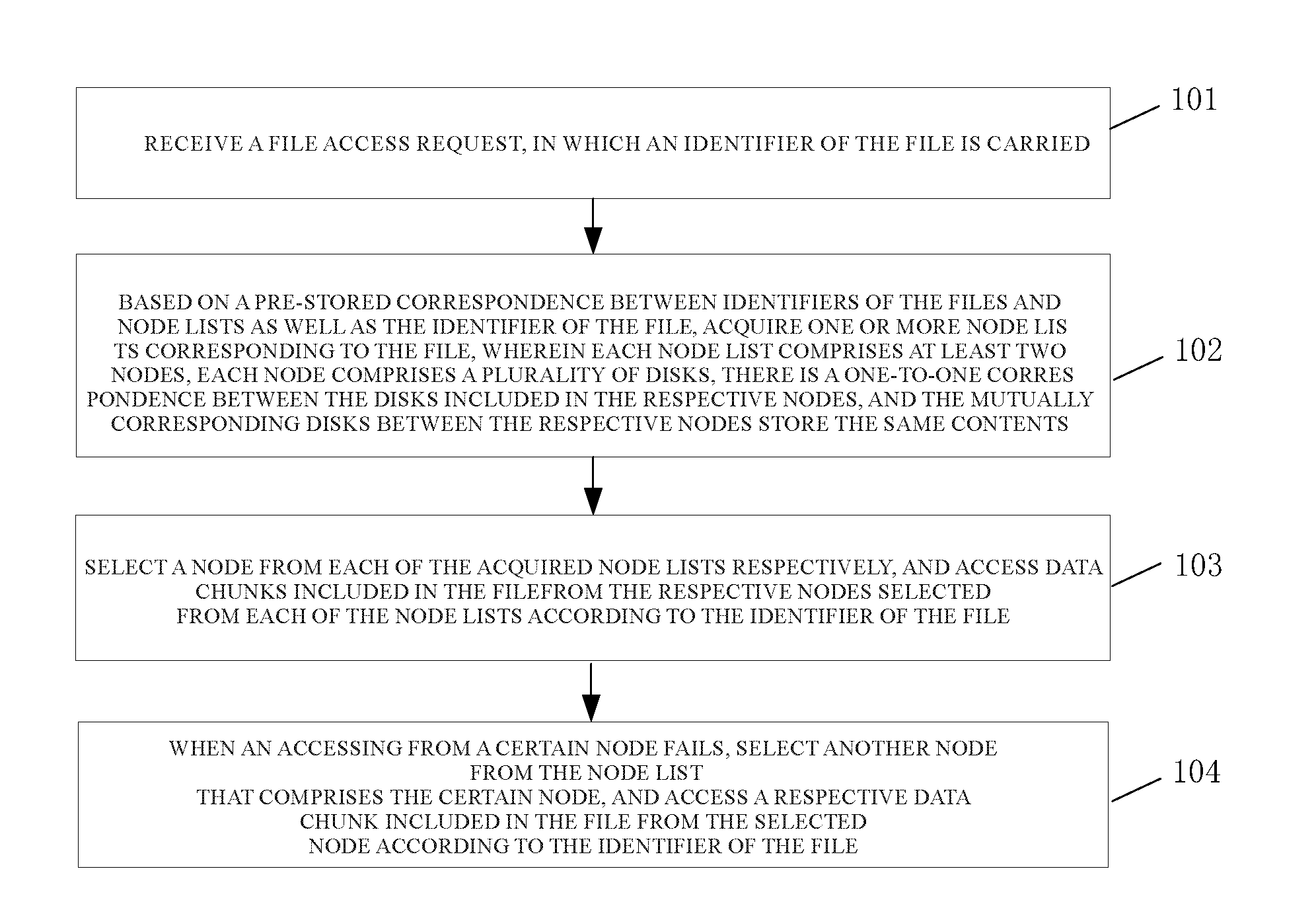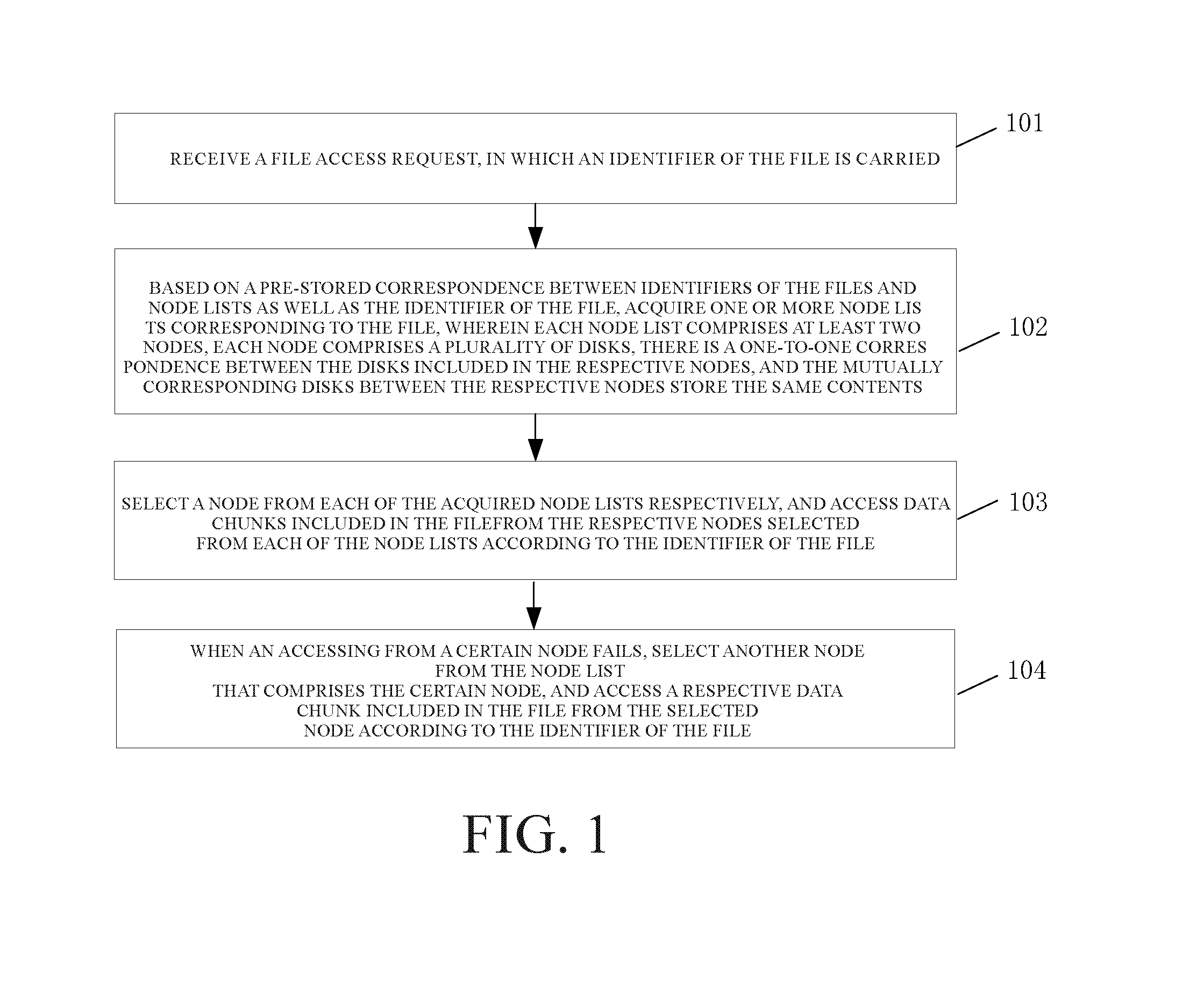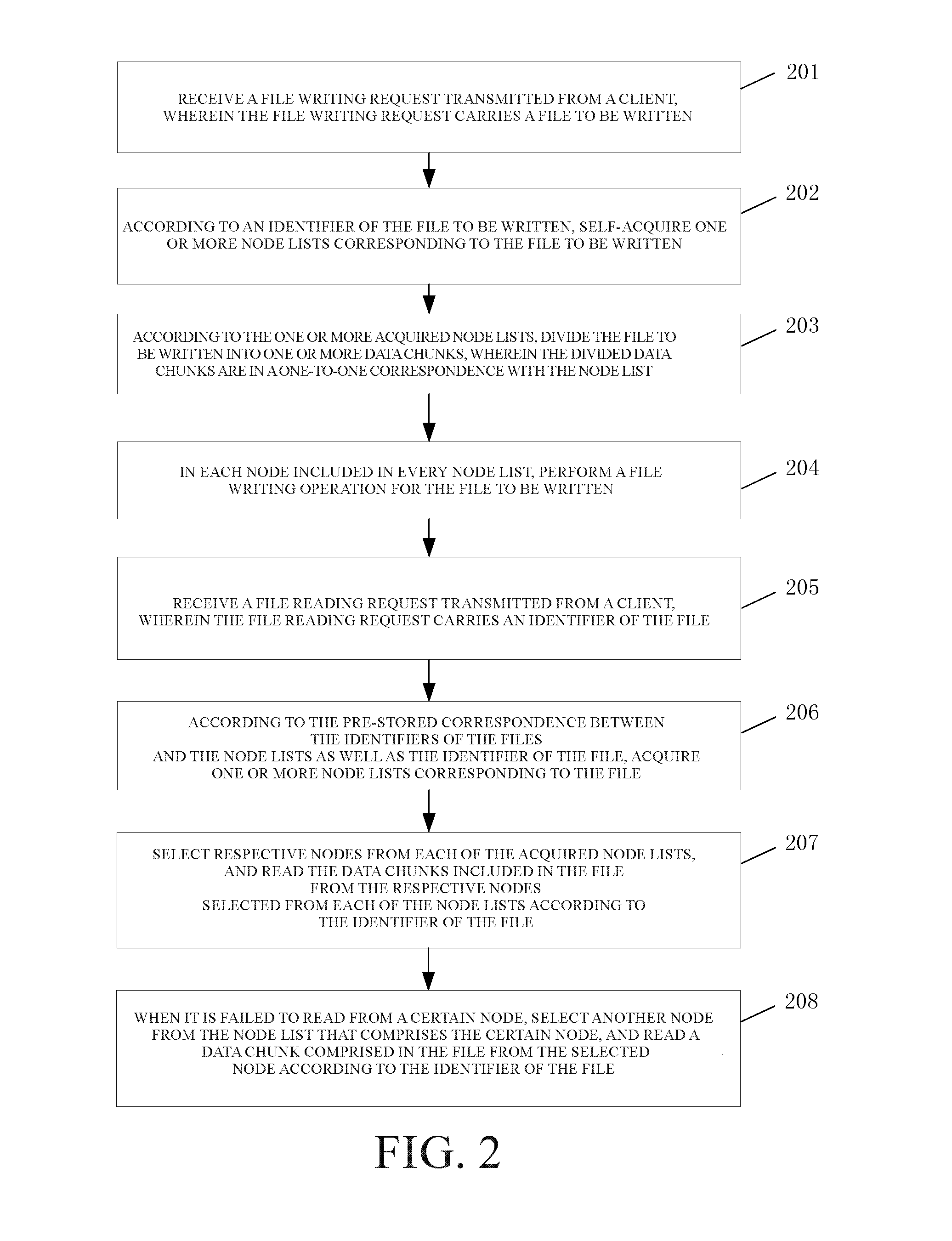Disk fault tolerance method, device and system
a fault tolerance and disk technology, applied in the computer field, can solve the problems of poor writing performance, high implementation complexity, and failure to do nothing about the system failure, and achieve the effect of improving the availability of the disk and the read-write performan
- Summary
- Abstract
- Description
- Claims
- Application Information
AI Technical Summary
Benefits of technology
Problems solved by technology
Method used
Image
Examples
first embodiment
[0035]Referring to FIG. 1, an embodiment of the present invention provides a disk fault tolerance method, which comprises:
[0036]101: receiving a file access request, the file access request carrying an identifier of a file;
[0037]102: according to a pre-stored correspondence between a file identifier and a node list as well as the identifier of the file, acquiring one or more node lists corresponding to the file, wherein each node list comprises at least two nodes and each node comprises a plurality of disks; there is a one-to-one correspondence between the disks included in respective node in a single node list, and the same content is stored in each of the mutually corresponding disks between each respective node;
[0038]103: selecting a node from each of the acquired node lists respectively, and accessing data chunks included in the file from the node selected from each of the node lists according to the identifier of the file;
[0039]104: when the access from a certain node fails, se...
second embodiment
[0041]The present invention uses a dual machine duplex mechanism at the system level to protect data security, wherein the dual machine duplex mechanism means that two machines both provide the same external service, each of which functions as a backup of the other and has a balanced load, wherein when one machine breaks down, traffic on this machine can be timely switched to the peer machine.
[0042]Referring to FIG. 2, an embodiment of the present invention provides a disk fault tolerance method based on file writing, which comprises:
[0043]201: receiving a file writing request transmitted from a client, wherein the file writing request carries a file to be written;
[0044]Specifically, this embodiment of the present invention can be applied to a distributed storage system, which may be TFS (Tencent File System, a mass distributed storage system developed by Tencent).
[0045]The entity to implement the embodiment is a management node chxmaster, as shown in FIG. 3. In the embodiment of th...
third embodiment
[0073]In addition to the above data redundancy in a disk level, the present invention can further refine granularity and achieve a data redundancy in a data chunk level. Currently, a large-scale distributed system based on TFS is comprised of tens of thousands of machines, wherein each machine comprises approximately 11 disks, and each disk has a size of approximately 750 GB to 2 TB. Massive data render data read-write anomaly a frequently occurrence. If a data read-write anomaly occurs, data are migrated in unit of disk. This will severely affect the system service efficiency, and on the other hand will cause a lot of overhead associated with hardware. However, a data redundancy in a data chunk level can solve the above problems.
[0074]Referring to FIG. 5, an embodiment of the present invention provides a disk fault tolerance method, which comprises:
[0075]301: receiving a file writing request transmitted from a client, wherein the file writing request carries a file to be written;
[0...
PUM
 Login to View More
Login to View More Abstract
Description
Claims
Application Information
 Login to View More
Login to View More - R&D
- Intellectual Property
- Life Sciences
- Materials
- Tech Scout
- Unparalleled Data Quality
- Higher Quality Content
- 60% Fewer Hallucinations
Browse by: Latest US Patents, China's latest patents, Technical Efficacy Thesaurus, Application Domain, Technology Topic, Popular Technical Reports.
© 2025 PatSnap. All rights reserved.Legal|Privacy policy|Modern Slavery Act Transparency Statement|Sitemap|About US| Contact US: help@patsnap.com



